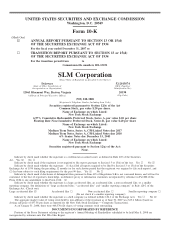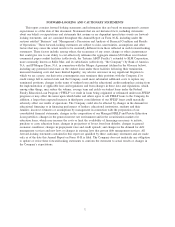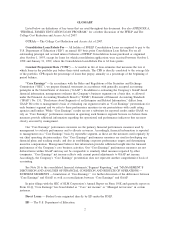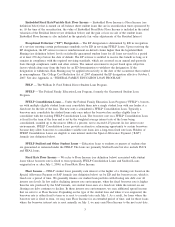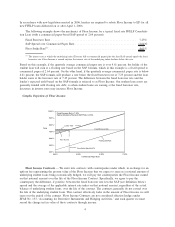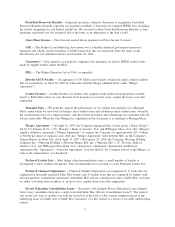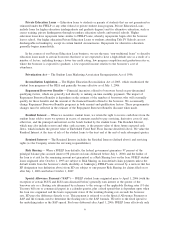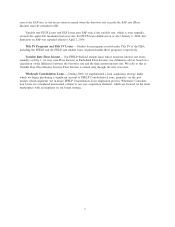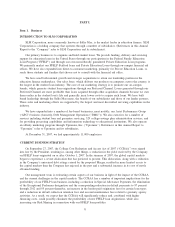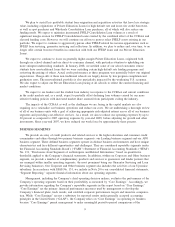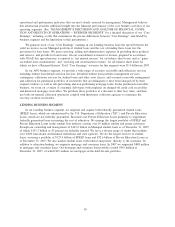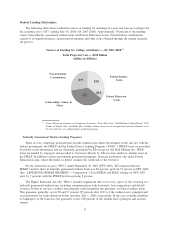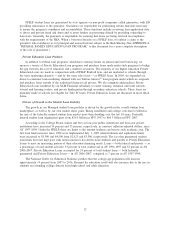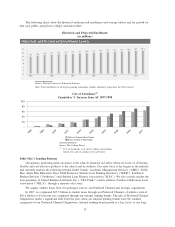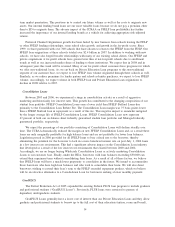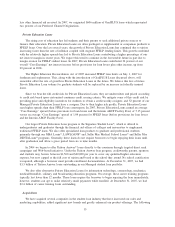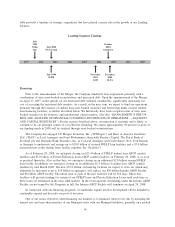Sallie Mae 2007 Annual Report Download - page 7
Download and view the complete annual report
Please find page 7 of the 2007 Sallie Mae annual report below. You can navigate through the pages in the report by either clicking on the pages listed below, or by using the keyword search tool below to find specific information within the annual report.Private Education Loans — Education loans to students or parents of students that are not guaranteed or
reinsured under the FFELP or any other federal or private student loan program. Private Education Loans
include loans for higher education (undergraduate and graduate degrees) and for alternative education, such as
career training, private kindergarten through secondary education schools and tutorial schools. Higher
education loans have repayment terms similar to FFELP loans, whereby repayments begin after the borrower
leaves school. Our higher education Private Education Loans to students attending Title IV Schools are not
dischargeable in bankruptcy, except in certain limited circumstances. Repayment for alternative education
generally begins immediately.
In the context of our Private Education Loan business, we use the term “non-traditional loans” to describe
education loans made to certain borrowers that have or are expected to have a high default rate as a result of a
number of factors, including having a lower tier credit rating, low program completion and graduation rates or,
where the borrower is expected to graduate, a low expected income relative to the borrower’s cost of
attendance.
Privatization Act — The Student Loan Marketing Association Reorganization Act of 1996.
Reconciliation Legislation — The Higher Education Reconciliation Act of 2005, which reauthorized the
student loan programs of the HEA and generally became effective as of July 1, 2006.
Repayment Borrower Benefits — Financial incentives offered to borrowers based on pre-determined
qualifying factors, which are generally tied directly to making on-time monthly payments. The impact of
Repayment Borrower Benefits is dependent on the estimate of the number of borrowers who will eventually
qualify for these benefits and the amount of the financial benefit offered to the borrower. We occasionally
change Repayment Borrower Benefits programs in both amount and qualification factors. These programmatic
changes must be reflected in the estimate of the Repayment Borrower Benefits discount when made.
Residual Interest — When we securitize student loans, we retain the right to receive cash flows from the
student loans sold to trusts we sponsor in excess of amounts needed to pay servicing, derivative costs (if any),
other fees, and the principal and interest on the bonds backed by the student loans. The Residual Interest,
which may also include reserve and other cash accounts, is the present value of these future expected cash
flows, which includes the present value of Embedded Fixed Rate Floor Income described above. We value the
Residual Interest at the time of sale of the student loans to the trust and at the end of each subsequent quarter.
Retained Interest — The Retained Interest includes the Residual Interest (defined above) and servicing
rights (as the Company retains the servicing responsibilities).
Risk Sharing — When a FFELP loan defaults, the federal government guarantees 97 percent of the
principal balance plus accrued interest (98 percent on loans disbursed before July 1, 2006) and the holder of
the loan is at risk for the remaining amount not guaranteed as a Risk Sharing loss on the loan. FFELP student
loans originated after October 1, 1993 are subject to Risk Sharing on loan default claim payments unless the
default results from the borrower’s death, disability or bankruptcy. FFELP loans serviced by a servicer that has
EP designation (see definition above) from ED are subject to one-percent Risk Sharing for claims filed on or
after July 1, 2006 and before October 1, 2007.
Special Allowance Payment (“SAP”) — FFELP student loans originated prior to April 1, 2006 (with the
exception of certain PLUS and SLS loans discussed below) generally earn interest at the greater of the
borrower rate or a floating rate determined by reference to the average of the applicable floating rates (91-day
Treasury bill rate or commercial paper) in a calendar quarter, plus a fixed spread that is dependent upon when
the loan was originated and the loan’s repayment status. If the resulting floating rate exceeds the borrower
rate, ED pays the difference directly to us. This payment is referred to as the Special Allowance Payment or
SAP and the formula used to determine the floating rate is the SAP formula. We refer to the fixed spread to
the underlying index as the SAP spread. For loans disbursed after April 1, 2006, FFELP loans effectively only
6

